S.A. Crow's Blog
December 18, 2024
What are you looking forward to?

I know a lot of blogs and posts this time are going to be about achievements and that just sounds to tasking, for your or my mental health. I've already done my quarter and year review in my journal. What I want to talk about is what I'm excited about.
Some of you might know that I'm a Pinterest junkie and of course I've made my 2025 board and 2025 experiences board there.
Recently I did a YouTube Live where we made 2025 vision boards. You can watch it here. On there we talked about our word of the year and using it to help make your vision boards.
My word of the year is:
Compassionate
This is something that I want to give myself and have for others, even strangers.
Monty Python Holy Grail reference*
Some great monthly planner themes I haven't tried
Microadventures all year
Reading around the world tbr
Learning how to practice seasonal and slow living
Learn to play Zombie on the guitar
A solo trip
Finally dealing with my trauma responses
Starting our Van Life nest egg
Creating a capsule wardrobe
Downsizing
Dealing with End of Life and Medical paperwork to protect myself and Jenn
Entering my new era
Finding new readers
K-dramas coming up https://www.fastcompany.com/91235947/why-2025-will-be-year-of-the-k-drama
BL dramas to coming up https://bltai.com/thailand/look-yyds-entertainment-unveils-2025-2026-bl-lineup/ https://bltai.com/thailand/look-thai-based-streaming-platform-unveils-its-2025-original-lineup/ https://bltai.com/thailand/live-update-must-watch-bl-gl-titles-in-gmmtv2025-riding-the-wave/
More authortube and live events for you all on my YouTube channel and social media.
many mugs of tea of course
Bring you all Burning Desires the First Fire series Box set
Bring you a new P.I.R. urban fantasy mystery serial named Amber and Ashes that I'll be co-writing with D. C. Sadie
Learning how to take better care of my succulents
Publish the first P.I.R. novel Obsidian Vendetta before June
Having an author booth at my local Pride event in June
Having a Book themed birthday party
The art I'm going to create
Making a book light and a hanging cloud light
I think ending this list at 25 in 2025 is fitting, don't you?
What are you looking forward to?
I'd love to hear if we can squee about it together in anime school girl style.
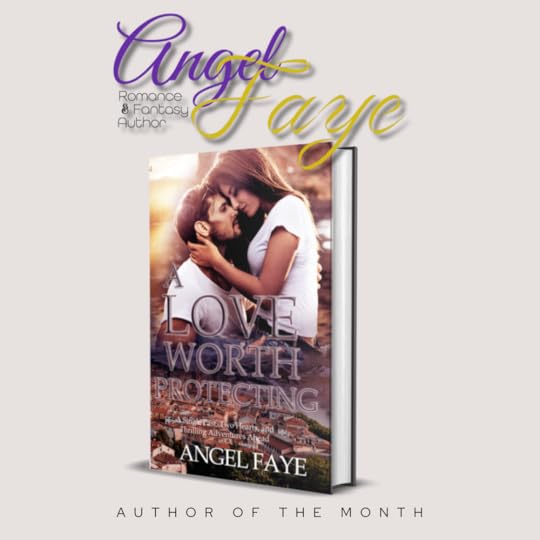

Demons & Disaster by the team of Rachel D. Adams and McClellan at StoryOrgin
Devon Gambrell-Clark Video on Introvert Networking https://youtu.be/ZLe0SBe54-Y
Magic and Mischief for Readers & Writers of Fantasy Genres Facebook Group
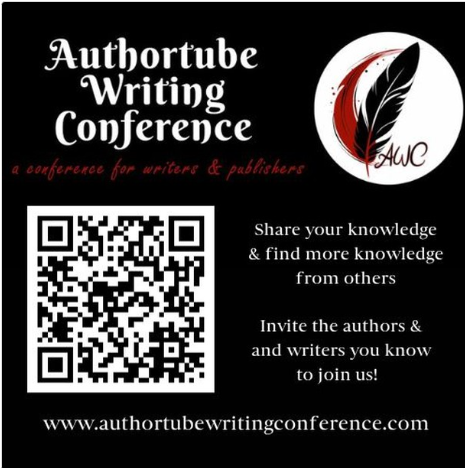
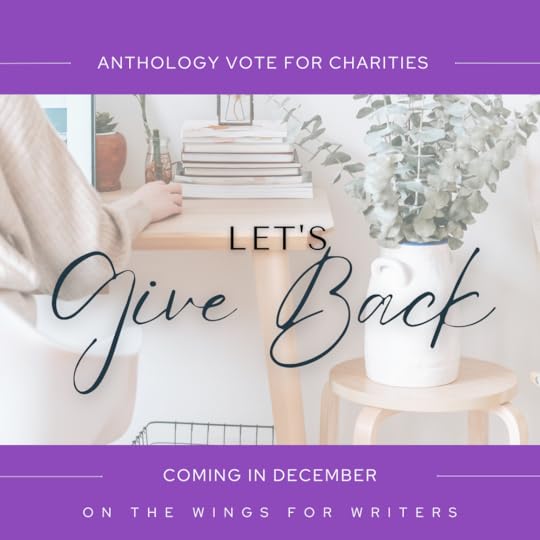



A new P.I.R. serial is coming in January posting on Fridays.
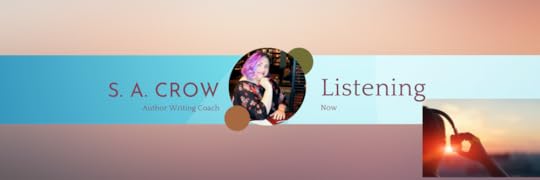
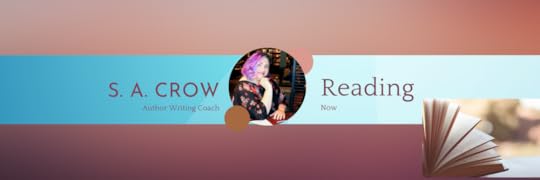
Of Saints and Shadows
Book Review: Love in the Big City by Sang Young Park
Sang Young Park’s Love in the Big City is a visceral, unapologetically raw portrayal of queer life in contemporary Seoul. This novel doesn’t just tell a story; it cracks open a world that is at once deeply personal and profoundly universal. As someone who first encountered this narrative through the Korean show based on the book, I was amazed by how both the novel and its adaptation captured the same intensity and authenticity, each in their own distinct ways.
At its core, Love in the Big City is a story about loneliness, love, and survival. Park’s protagonist—a young, queer man grappling with the complexities of his identity, family, friendships, and HIV diagnosis—leaps off the page with his messy, vibrant humanity. His experiences are deeply Korean, and yet they echo the struggles faced by LGBTQ+ individuals worldwide: navigating love in a society that marginalizes them, finding fleeting moments of joy amidst rejection, and battling the stigma that surrounds their very existence.
What struck me most as a Western reader was how the novel offered a window into the unique cultural and systemic challenges faced by LGBTQ+ individuals in South Korea. The stigma surrounding HIV, in particular, is laid bare in unflinching detail. Park writes about this with a frankness that is both heartbreaking and hopeful, exposing the pain of rejection while also highlighting the strength it takes to live unapologetically.
Despite its heavy themes, the novel doesn’t wallow in despair. Park’s writing is sharp, often darkly humorous, and always deeply human. The friendships, particularly the relationship between the protagonist and his roommate Jaehee, are a testament to the found families that sustain us when the world feels unkind. Their bond is messy, dysfunctional, and yet profoundly loving—a reminder that connection, even imperfect, is what keeps us moving forward.
For me, this novel is a mirror and a bridge. It reflects the struggles I’ve seen in my own community while also opening my eyes to the lived experiences of my rainbow brothers, sisters, and others in a different cultural context. It’s real, it’s dirty, and it’s beautiful—a book that lingers long after the last page.
Whether you’re drawn to LGBTQ+ stories, intrigued by Korean culture, or simply seeking a deeply human narrative, Love in the Big City is an essential read.
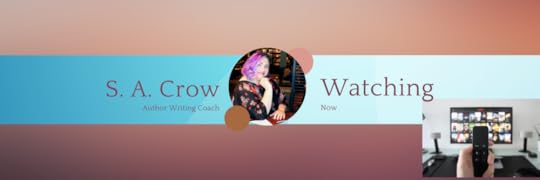
Fourever You
Our Youth
See Your Love
The Heart Killers
When the Phone Rings
Your Sky
Caged Again
Between Us (rewatch)
ThamePo Heart that Skips a Beat
Bloodhounds
December 11, 2024
6 Ways Embracing Other Cultures Can Transform Your Writing
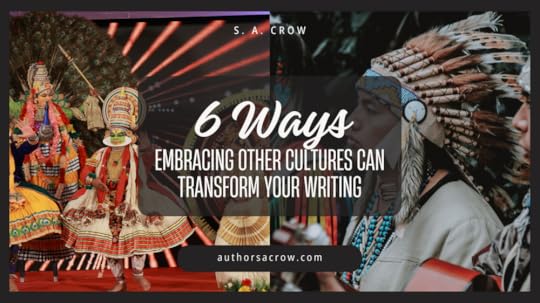 Opening Yourself Up to Other Cultures and How That Can Improve Your Writing.
Opening Yourself Up to Other Cultures and How That Can Improve Your Writing.
As writers, do you find yourself people watching out in public? We're constantly drawing on the world we've experienced, researched, or from the people we meet to the stories we hear. One of the best things you can do to enrich your storytelling is to step outside your cultural bubble. Many of you know that I'm fascinated by cultures, travel, and psychology and all of that comes into play in today's post. Opening yourself up to other cultures doesn't just expand your worldview; it helps you write characters, settings, and stories with depth, authenticity, and resonance.
Empathy: em·pa·thy noun
Greek empatheia, literally, passion, from empathēs emotional, from em- + pathos feelings, emotion — more at pathos
the action of understanding, being aware of, being sensitive to, and vicariously experiencing the feelings, thoughts, and experience of another *Merriam-Webster Dictionary
Understanding cultures beyond your own fosters empathy and adds layers to your work. Readers want authentic, multifaceted characters, and realistic worlds. Breaking the stereotypes by exploring traditions, languages, and customs. Challenge your own preconceptions, creating a work that resonates across diverse audiences.
Read Widely and Diversely
An easy way to start is to read books by authors from different cultural backgrounds. Pat attention to how they weave cultural elements into their stories. Here is a list on Goodreads that might help you get started https://www.goodreads.com/genres/cultural
Some of my favorites areMemories of a GeishaGuns, Germs, and SteelThe HelpBelovedAnne FrankTo Kill a MockingbirdLike Water for ChocolateOutlanderThe Count of Monte CristoLove in the Big CityEat, Pray, LoveThe Girl with the Dragon TattooThe Handmaid's TaleChocolateIn the WoodsThe Poppy WarCirceThe Paris WifeThe Song of Achilles
Watch Shows from Other Cultures
Television shows and movies offer a treasure trove of stories from around the world. From South Korean dramas to French mysteries, shows from other cultures can immerse you in unique storytelling techniques, character dynamics, and cultural norms. For example, Takara no Vidro (which I personally enjoy) is a great way to dive into Japanese storytelling and learn about their nuanced approaches to themes like family and tradition. Watching such shows not only entertains but also exposes you to cultural subtleties that can enrich your own writing.
Travel, if you can
Nothing beats experiencing a culture firsthand. Whether it's a road trip to a neighboring town with a unique history or a journey abroad, immersing yourself in another environment can spark countless story ideas.
If you can't do some of these try checking out restaurants in your area from other cultures. You'd be surprised how many cultures are in your backyard.
Connect with People from other Backgrounds
Build relationships with people from diverse cultural groups. Join pen pal groups or other groups. Offer to be an English language buddy for people who are studying the language in other countries.
Research like a Detective
If travel or direct connection isn’t an option, research is your best friend. Watch documentaries, explore online forums, and dive into cultural studies. However, be mindful to respect cultural nuances and avoid appropriation.
Attend Cultural Events and Festivals
You'll gain tools to build more layered, authentic worlds and characters. Adding a tapestry of human experiences, making your work more relatable to readers of all backgrounds.
As a Native American writer, I often draw on my own history, research, and psychology training to shape my stories. Exploring other cultures helps me create more realistic and diverse characters and settings. By embracing the world beyond your own, you not only grow as a writer, but as a person.
Take the first step today—read a book from a different culture, binge-watch an international series, or try a new restaurant from a culture you aren't familiar with. You never know what will inspire your next story.

The cookbook for On the Wings for Writers is coming together. I just sent out a note to the spotlight authors for their full-page ads included in the book.
I started work on the next chapter for Small Embers, the last story inside the Burning Desires Fire Series Box Set.

Introvert Networking, Networking for Authors https://youtu.be/ZLe0SBe54-Ychannel of Devon Gambrell

Episodes of the P.I.R. urban fantasy serial Hematite without Faith drops Thursdays on Medium

Voting for On the Wings for Writers Anthology charity
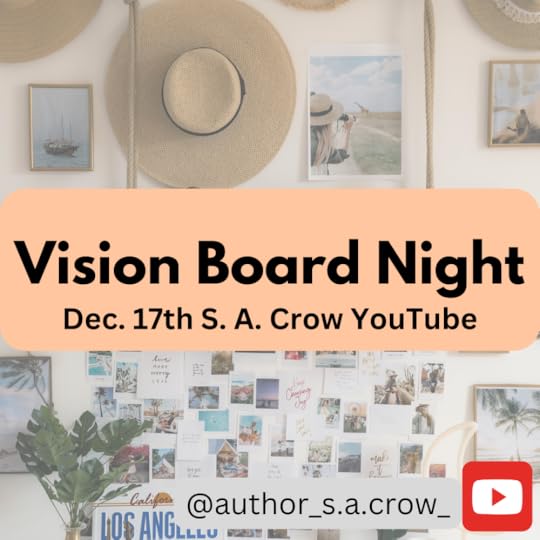
Join me to create your 2025 vision board with tips and tricks and fun on YouTube.


Love in the Big City

Every You, Every Me
Fourever You
Our Youth
Mr. Plankton
See Your Love
The Heart Killers
When the Phone Rings
Your Sky
Caged Again
Between Us (rewatch)
December 4, 2024
It's December
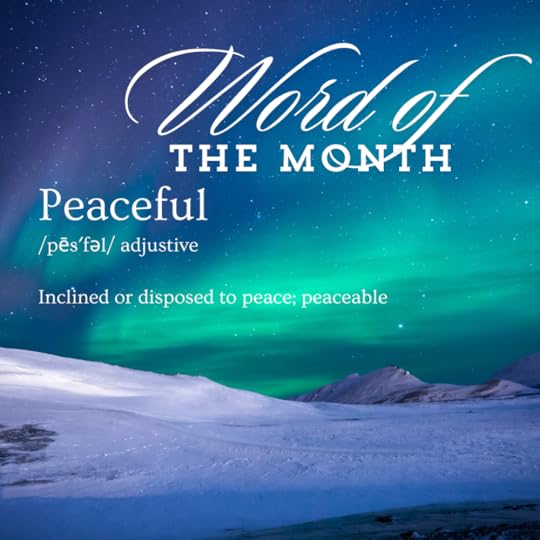
Here we are in the closet at the end of the year we've been. I will not give you a blog about my achievements for the year or any of that stuff. What I am going to do is share some fun stuff with you, events, and stuff I'm enjoying. Let's catch up so grab a coffee from the barista and join me at the comfy sitting area.
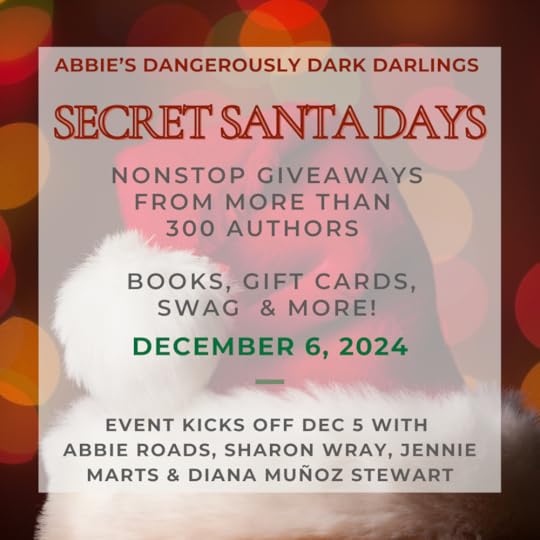



I'm also taking a staycation in the last week of December. Those of you that know that I'm a work-a-holic know that this is a big deal. I've made it a goal for 2025 to take a vacation every quarter for my own self-care and mental health.
my new sugar skull house slippers they are warm and fuzzy and only cost me $5 at 5 Below
I've started to take care of my skin by starting a skin care routine and recently I switched over to a winter routine because it's winter weather here in Texas. We only had a few weeks of Fall.
I've finally replaced my broken phone and got a smart watch at the same time. Tracking my crazy sleep pattern is fun.
Reading "Love in the Big City" by Sang Young Park. I watched the series first and I'm enjoying the book as much as the show.
My new weekly cleaning schedule has been a godsend. I've divided the house into 6 rooms or spaces and given each their own day of the week. But my Sundays are reserved as my Self-care Day.
Speaking of I'm loving having a day dedicated to self-care and being serious about it. It helps that the family helps me with this plan.
Most of you know that I've been watching shows out of Asia instead of the "stuff" coming out of Hollywood. The layered story-telling, magical realism, and difference in story telling rules has been a breath of fresh air. If you want to see what I'm watching, wanting to watch, or more, check out my list here.
Stash Teas
Vanilla Decaf Chai Tea
Double Bergamot Earl Gray

Rachel D. Adams and Dawn McClellan's books
Devon Gambrell and The Witch's Crystal I highly recommend
Bog Hag an Anthology by AuthorTube
Kay Parquet's novels and journal
Sarah C. Brody The Stella Kendrick Series
M. M. Ward's books
Rita Slanina's journals and more
S. D. Huston's novels & Clash of the Goddesses Series
Celest Thrower and these awesome anthologies
Brandy Bullock's Journals
Of course, the Raven's Cookbook series for Charity


Love in the Big City by Sang Young Park

Fourever You
Every You, Every Me
Our Youth
Mr. Plankton (Netflix)
See Your Love
The Heart Killers
When the Phone Rings (Netflix)
Your Sky
Caged Again
The Menendez Brothers (Netflix)
November 26, 2024
"How to Write Antagonist Scenes That Steal the Spotlight"

Antagonists aren't just obstacles for your protagonist--they're catalysts. Crafting compelling scenes for your antagonist can make or break your story. Whether they are a sinister villain, a misunderstood rival, or a natural force of destruction, their scenes should leave readers intrigued, unsettled, and hungry for more. We'll explore actional steps to ensure your antagonist steals the spotlight in all the right ways.
One rule I found was to put your villain on the stage as soon as possible in your story. Here are a few examples from my novels of the villain's first appearance. If you don't want to be spoiled just scroll past them.
The reason I’m sitting at the head of the conference table, gazing at promo shots for the
concert and the schedule of my appearances for the convention, is Amanda, who is not only my
publicist but also handles the PR work for Home. Her short, blond hair is as well-kept as the rest
of her. She’s an awesome publicist and I trust her like a close friend. I have her to thank for the
success and freedom I have.
Rising to her full 5'10” height and smiling as she comes around to say hello to Jessica and
me, you can clearly see the similarities between Amanda and Jessica. They both come from
model backgrounds, moving with power and purpose. They believe deeply in their bones they
have influence over people, have gotten people to pay millions of dollars for fashion. That power
has substance. It’s something to watch and admire.
Amanda’s wearing a gold top that works with her blond hair and fragile appearance. She
always makes me think of a tiny bunny, but I know she is a lion on the inside. I wouldn’t want to
tangle with her in any capacity.
Landon passes a group of men approaching the courtroom. Most scream ‘highly paid lawyer’ with their expensive, tailored suits and shiny shoes. The man in the middle of the group draws my attention, a shark amidst a school of fish.
“That’s Emmanuel, Sebastian’s older brother,” Anna says to no one in particular. “He works for some high-end banking establishment.” As if overhearing her, Emmanuel scrutinizes, using his predatory gaze zeroing in on Anna as if he can smell blood in the water. My muscles tighten for an attack. I cross my arm in front of Anna’s body as if to put her behind me and out of the line of danger.
“I only met him a few times,” Anna continues as they pass us and claim a nearby meeting room. “Holidays mostly. I got the impression Sebastian didn’t have any other family.” Anna continues as they pass us into one of the meeting rooms attached to the courtroom. I relax and even out my breathing to moderate my pumping heart rate.
As I make the last strokes on the keyboard, the biggest distraction himself walks in: Hutchinson. With his extravagantly tailored suit and Rolex flashing from the cuff of his sleeve, his wingtip, sable-shined shoes tap decisively across the tile floor. He's the top dog among his entourage of suits, who disperse among the gathered volunteers.
He stalks toward me with his politician's smile, "Steve! How is that winning speech coming?"
"It's getting there," I acknowledge from my laptop screen where I hit the print button.
"Good, good, that's what I want to hear. We couldn't have done this without you! I hope you know that. You'll be at my donor acknowledgement dinner. I won't take no for an answer. I want to introduce you to people. Make sure to bring a lovely woman to hang on your arm. I know you don't have to pay for that." He finishes with a guffaw.
Here's some ideas to give these scenes a distinct tone and atmosphere.
Location, location, location: choose settings that enhance your antagonists' personality or motives. Example; a cold, sterile corporate office or a chaotic cluttered hideout might show their instability.
Symbolism in Space: You can use the environment to reinforce their role in the story. A withering garden might mirror their destructive influence, a towering skyline could show their ambition.
Contrast to the protagonist settings: If your protagonist operates in a bright open space, give your antagonist the opposite, especially if your antagonist is the foil for your protagonist.
You want your antagonists' dialogue and actions to push the story forward.
Layered dialogue: You might want to avoid the villain monologue unless they are crucial. Give your antagonist wit, sarcasm, or chilling calmness to keep your readers on the edge.
Show, Don't Tell: If you've been doing any writing research you've heard this saying. Actions will speak louder than words. Have them display their power, manipulation, and how they are outsmarting the hero. Also leaving your readers guessing.
Strategic Reversals: You can use your scenes to flip the script. Let the antagonist win in unexpected ways.
Remember that your antagonist is as important of a character as your protagonist and their goals should feel deeply personal and inevitable.
Create a mirror moment: This is where you reflect your protagonist's fears or weaknesses through your antagonist's actions or dialogue. This can not only add tension but also deepens their rivalry.
Force hard choices: put your antagonist in a position where their victory feels almost justified. Make readers think, what would you do in their shoes?
Weave in Vulnerability: Even villains can have a soft spot. Showing this at the right time can make your antagonist more relatable and memorable.
Their presence should make the stakes feel insurmountable.
Escalate the threat: These interactions with the antagonist should be more intense than the previous, forcing the protagonist to adapt.
Foreshadow their ultimate plan: subtle hints and foreshadowing is your greatest tool, to build anticipation and dread.
Challenge the protagonist's morality: push your protagonist to question their values, making the antagonist's scenes pivotal moments of growth.
Leave your audience breathless, when you wrap up an antagonist's scene.
Cliffhangers: end scenes with a shocking twist, unresolved conflict, or a wtf moment.
Echo their presence: even when off-page, let their influence linger through other characters' reactions or the aftermath of their actions.
Tease the showdown: build excitement for the next confrontation by hints and foreshadowing their next moves.
Antagonists aren't just there to cause trouble--they're there to elevate your story. Let them shine, steal the spotlight, and challenge your protagonist to rise to the occasion.
Who is your favorite antagonist?
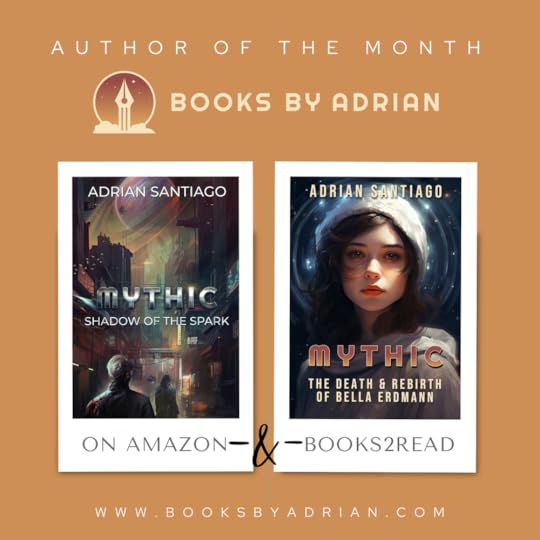

I've gotten past the tricky scene that was holding me back on the boxset project Burning Desires. We are getting closer to getting this to you all.
The cookbook manuscript is coming together nicely. We're still in negotiations with the charity.
Every Thursday an episode of Hematite without Faith drops here. Read this P.I.R. urban fantasy novella for free.





Love int he Big City by Park Sang-young

Bad Guy, My Boss
Fourever You
Every You, Every Me
See Your Love
Family By Choice
Blue Canvas of Youthful Days
Our Youth
Bad to Bed
Your Sky
Heart Killers
November 13, 2024
The Inner Struggles and Motivations That Bring Antagonists to Life
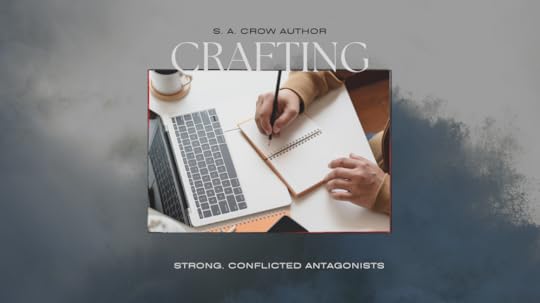
In the first part of this series, we discussed how a strong antagonist can elevate a story by creating tension, conflict, and pushing the protagonist to grow. Now, we’re going to explore what lies beneath the surface: the internal conflict, motivations, and vulnerability that make an antagonist feel real, nuanced, and compelling.
Internal conflict vs. external conflict: Now Novel has a great article "External and internal conflict: Examples and tips"
"...internal conflict refers to a character's internal struggle." "External conflict, on the other hand, refers to the conflicts between a character and external forces."
*Now Novel "External and internal conflict: Examples and tips"
If you want a antagonist with internal conflict to be more than an obstacle, they need to be a character in their own right with struggles, insecurities, and doubts. This can make readers empathize even if they don't agree with the antagonist's actions.
Example: Consider Darth Vader from Star Wars. He’s not just a ruthless enforcer; he’s a character torn between the dark side and his connection to his son, Luke. This inner turmoil adds depth and makes him more than just a villain in a black cloak.
Don't worry that giving your antagonist weaknesses will make them less of a threat; on the contrary it will make them feel more real and relatable. These vulnerabilities could be anything from a personal fear, painful past, or a loved one they'll go to the ends of the earth to protect. These elements can help readers understand them, even if their actions are excusable.
Example: In The Hunger Games, President Snow is a powerful figure, but his obsessive need to maintain control reveals a weakness. This vulnerability—fear of losing his grip on Panem—drives many of his actions and shows why he’s willing to go to extreme lengths to preserve his authority.
Motivation can stem from personal history, a sense of justice (even if it's twisted), or past trauma. The stronger the motivation the more believable.
Here are a few types of motivations to consider:
Personal Revenge: A wrong committed against them that they can’t move past.
Ideological Belief: A belief system or cause they feel passionate about, even if it’s harmful to others.
Love or Loyalty: Protecting someone they care about or avenging a loss.
Desire for Power: An insatiable need for control, wealth, or influence.
Survival or Self-Preservation: Acting out of fear or desperation.
Example: Killmonger from Black Panther is a powerful example of an antagonist with clear, justified motivations rooted in personal pain and a desire for justice. Though his methods are destructive, his goal—empowering oppressed people—resonates with the audience, making him a memorable character.
For added depth, you can tie the antagonist's motivations to the protagonists in some way. This can make it feel personal rather than random, giving a meaningful showdown between them. Is there a shared past? Do they mirror each other's strengths or weaknesses? Do they have a relationship with one another that complicates things?
Example: In Harry Potter, Voldemort’s obsession with immortality and dominance clashes with Harry’s desire for peace and friendship. Both are “chosen ones,” shaped by their circumstances, but they’ve chosen different paths, which makes their conflict all the more intense.
Creating a well-rounded antagonist means digging deep into their motivations, internal struggles, and vulnerabilities. Remember, an antagonist with layers will not only challenge your protagonist but will also resonate with readers. Whether they seek revenge, power, or justice, letting their flaws and motivations shine through will make your antagonist memorable.
Next week, we’ll discuss practical strategies for writing your antagonist’s scenes, including dialogue techniques, building tension, and creating impactful confrontations. Happy writing!
 The Witch's Crystal Book Review
The Witch's Crystal Book ReviewWow, where do I even begin with Devon Gambrell’s The Witch’s Crystal? This novel hooked me from the first page, plunging me into a richly woven world that felt as real as my own. Gambrell’s world-building is a masterclass in immersive storytelling—every detail feels intentional, every scene brimming with color and life, pulling you in deeper with each turn of the page.
One of the aspects I absolutely loved was how vivid and expansive the world felt. Gambrell’s attention to detail makes it easy to get lost in the lore, landscapes, and societies she’s created. From shadowed forests steeped in magic to bustling markets filled with strange and wondrous wares, I felt like I was traveling alongside the characters, discovering each location right there with them. I can’t say enough about how powerfully the setting shapes the story; it’s as much a character as any of the people we meet!
And, yes, I am already dreaming of a world map! I mean, who wouldn’t want a map to track the characters’ journeys through this enchanting land? It’s the kind of world that begs to be charted. I have no doubt that when it comes, it’ll be just as stunning and layered as the story itself.
If you’re a fan of beautifully crafted worlds, layered magic systems, and characters with a real depth and authenticity, The Witch’s Crystal is absolutely one to add to your shelf. Gambrell is one to watch—I can’t wait to see what she does next!
Devon Gambrell https://www.amazon.com/stores/Devon-Gambrell/author/B0CV1DHW2F?ref=ap_rdr&isDramIntegrated=true&shoppingPortalEnabled=true


Burning Desires Firs Series boxset
Drafting Raven's Cookbook Vol. 4
Publishing weekly episodes of Hematite without Faith a P.I.R. novella on medium

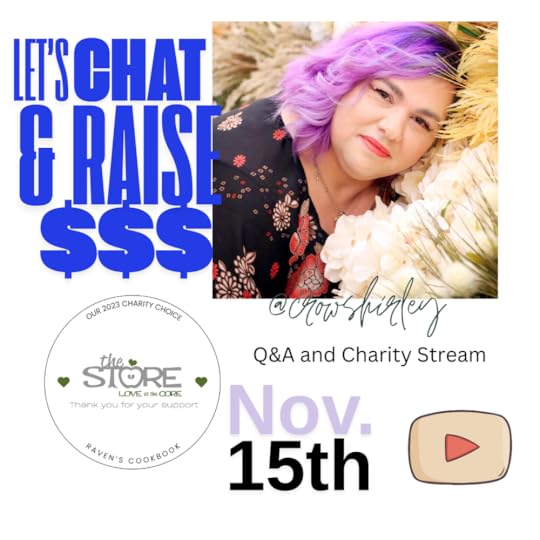


His Sheild by Sue Brown


Bad Guy, My Boss
Jack & Jocker
Kidnap
Fourever You
Every You, Every Me
My Damn Business
Eccentric Romance
See Your Love
Family By Choice
Blue Canvas of Youthful Days
Our Youth
Bad to Bed
True Beauty
November 6, 2024
Crafting a Complex Antagonist: Tips for Writing a Relatable Villain

I'm not sure who wrote this quote but it's one of my favorite thoughts when it comes to villains or antagonists.
Another great quote is from Chritopher Paolini in their book Eldest
What's the reason that I love these quotes when it comes to crafting antagonists? Because it reminds you that often a villain can be anyone in the wrong or right situation. They also need to be as fleshed out as your main character. The worst thing you can have is a antagonist that isn't a match for your hero.
What is the difference between an antagonist and a villain?Antagonist:
A character or force that actively works against the protagonist or main character, creating obstacles and challenges for them to overcome.
Can be an individual, institution, or even an environmental factor (e.g. natural disaster).
Does not necessarily imply moral evil or wickedness.
Villian:
A character
typically, is a foil to the protagonist, with the primary goal of causing harm or destruction
Key differences:
Motivation: Antagonists may have complex motivations, while villains are driven by desire for destruction or domination.
They provide:
tension
conflict
keep readers engaged
push the protagonist to grow and evolve.
A strong antagonist
It isn't just an obstacle; they are fully realized they are complex and create an opposition feel personal and compelling rather than arbitrary.
Antagonists also enhance the theme of your story and add to the stakes. They can reveal the protagonist's vulnerabilities, force difficult choices, and heighten the emotional depth of the narrative.
Drive the Conflict.
They create opposition by challenging the goals, beliefs, or values, of the main character. They can block the protagonist's path, take actions that jeopardize what the main character holds dear. They bring tension that pushes the story forward. The conflict doesn't have to be physical; it can be ideological, emotional, or psychological. By consistently posing obstacles, they can make the journey more complex and worth the victory in the end. Always ask yourself what your antagonist can do now that will suck for your protagonist.
Add Suspense
They should keep your readers guessing. Unpredictable actions, morally ambiguous, and introduce uncertainty, make your readers ask what will happen next. This unpredictability can create a sense of danger, anticipation, and a deeper story. Often, I have the antagonist do something at the end of a chapter leaving a cliff hanger to encourage the reader to say WTF and turn to the next chapter.
Pushing your protagonist
They should force your main character to confront fears, make undesirable and stupid decisions, or sacrifice something meaningful. You want them to challenge your protagonists' beliefs, forcing them to adapt and learn from the previous battles with the antagonist. They should be instrumental in your main character finding resilience, learning important lessons, and evolving into the best versions of themselves.
As we've discussed they have a major job in your story. It's important that you know them as well or even better than your main character. Here are some key characteristics that can make them memorable.
Identify what kind of antagonist they are.Villain: A character with evil intentions, seeking to destroy the protagonist. Examples include Capricorn (Inkheart series), Caul (Miss Peregrine’s Peculiar Children series), and Lord Voldemort (Harry Potter series).
Conflict Creator: A character whose goals directly conflict with the protagonist’s, but may not be inherently evil. Examples include Veruca Salt (Charlie and the Chocolate Factory) and Nurse Ratched (One Flew Over the Cuckoo’s Nest).
Inanimate Force: A non-human power or element that opposes the protagonist. Examples include Illness (A Sick Day for Amos McGee), Reverse Aging (The Curious Case of Benjamin Button), and Slavery (Beloved).
Protagonist’s Own Insecurities: The protagonist’s internal conflicts and insecurities can create an antagonistic force within themselves. Example: Max (Where the Wild Things Are) struggles with his own behavior.
Ally-Antagonist: A character who initially appears as an ally but later becomes an antagonist. This type adds shades of grey to the “good vs. evil” dichotomy.
Tyrant: A character who exercises oppressive power over others, serving as a primary antagonist.
Natural Force: A natural phenomenon or environment that poses a threat to the protagonist, such as a treacherous mountain range (survival story).
Overarching Antagonist: A central antagonist that drives the overall plot and is responsible for the main conflict.
Major Antagonist: An important villain that opposes the protagonists, causing significant events and difficulties.
Secondary Antagonist: A villain that plays a relatively useful role, but is not as central to the plot as a major antagonist.
Minor Antagonist: A villain with a minor role, often serving as a distraction rather than a significant threat.
Clear MotivationsThey have clear, understandable motivation that drives their actions. They have reasons--often rooted in their past experiences, values, or desires. If a natural force or inanimate force you need to know how that force will challenge your character.
Example: In Black Panther, Killmonger’s motivations stem from personal loss, a desire for justice, and a need to address historical oppression. His grievances and background make his radical actions feel grounded in a desire for change, which makes him a sympathetic, layered antagonist.
Personal StakesThey should have personal stakes tied to the conflict, even an illness has its own needs and wants. This adds depth, making the actions feel necessary. They or it should feel deeply invested in the outcome.
Example: In The Dark Knight, the Joker’s actions are rooted in his chaotic worldview, aiming to prove that anyone, even Gotham’s hero Batman, could be brought to his level of moral corruption. The Joker’s personal philosophy—and the stakes he places on proving his point—create an intense, philosophical clash with Batman.
Moral AmbiguityThink back to some of the most memorable antagonists. They are often morally complex, blurring the line between good and bad. Using questionable methods, or truly believing they are in the right, can allow readers to empathize with them on some level.
Example: In Les Misérables, Inspector Javert is not inherently evil, but his rigid dedication to the law makes him relentless in his pursuit of Valjean. Javert’s belief in the law as an absolute force drives him, yet his inner conflict over Valjean’s humanity adds a tragic layer to his character.
Charismatic or have a unique presence.I had a brother-in-law who was so charismatic that I often questioned the intelligence of his girlfriends. As a table-top-role-play-gamer I always said he must have rolled high on his charisma stat. Having them capture your readers attention is a great tool. This could be achieved through the character's intelligence, confidence, or even charm. Leaving a lasting impression, whether through a unique personality, powerful voice, or distinctive look.
Example: Hannibal Lecter in The Silence of the Lambs is unforgettable for his combination of intelligence, charm, and menace. His charisma contrasts with his brutality, making him as fascinating as he is terrifying.
Reflective of the protagonistThey can embody traits, goals, or beliefs that contrast or parallel the hero's. Reflecting something about the protagonist's character or force them to confront aspects of themselves that they would avoid otherwise.
Example: In Harry Potter, Voldemort and Harry share many similarities, from their backgrounds to their abilities. Voldemort’s choices and ambition, however, represent the dark path Harry could have taken under different circumstances, deepening their rivalry.
Growth or changeJust like your hero they can experience growth or change. They could become more ruthless, begin to doubt themselves, or have a breakdown, having them develop over the course of the story can add realism and depth.
Example: In Breaking Bad, Walter White starts as a protagonist but eventually becomes the antagonist as he descends into moral corruption. His transformation makes him both compelling and tragic, as audiences witness his gradual shift from well-intentioned to ruthless.
Next time we will delve into how to create realistic motivations, internal conflict and vulnerability, how they can challenge your hero, and tips to avoid antagonist tropes. I look forward to chatting with you all about making well-rounded antagonists.
Antagonists are the backbone of any compelling story, driving conflict, adding depth, and helping the protagonist grow. Without them, the protagonist’s journey would lack challenge, and the story itself would lack the tension that keeps readers turning pages. Antagonists are not merely obstacles; they’re fully developed characters with their own goals, stakes, and often, moral complexity.
One of my favorite quotes on this subject says it best: “The villain is the hero of his own story.” Similarly, Christopher Paolini in Eldest writes, “No one thinks of himself as a villain.” These quotes capture the essence of what makes an antagonist unforgettable—they don’t see themselves as wrongdoers but as champions of their own cause. This perspective reminds us that, in the right (or wrong) circumstances, anyone can become the antagonist in someone else’s story.
Creating a strong antagonist is about balance. They need to have depth and clarity of purpose, but they should also be formidable enough to challenge your hero. The antagonist should feel like a true match, pushing your protagonist to grow, adapt, and ultimately emerge as a changed person. Without a well-rounded antagonist, your story risks losing emotional weight and thematic richness.
In future posts, we’ll dive deeper into creating realistic motivations, crafting internal conflict and vulnerability, and exploring how to make antagonists who challenge your protagonist in meaningful ways. Stay tuned for more tips on how to develop the antagonists that will elevate your story to new heights.


Friday and Saturday Writing Sprints 9am CST on my YouTube Channel
Monday Tea Time author chat and book reading 10am CST on my YouTube Channel
November 15th Q-A Chairty Stream for TheStore.org You can send your questions through my social media or email sacrow@authorsacrow.com


The Witch's Crystal by D. Gambrell
Making Winter


Bad Guy My Boss
Blue Canvas of Youthful Days
Eccentric Romance
Every You, Every Me
Family by Choice (South Korea ver.)
Fourever You
Jack & Joker
Kidnap
Let Free the Curse of Taekwondo
My Damn Business
See Your Love
The King: Eternal Monarch
Uncle Unkown

AWC 2025 Authortuve Writing Conference 2025 Updates Happy Sunday all! Mark your calendar for some updates coming this Tuesday! https://www.youtube.com/live/ngL1K-pT-ps?si=NrliJa94ku3GdbBX
Devon Gambrell-Cark November Reading TBR booktube https://youtu.be/Nuyv2cELo2k?si=1ZDg-VhiuJZVm2Qv
S. A. Crow's recap of October and November goals https://www.youtube.com/watch?v=7Pt6dzL7UnY
S. A. Crow reading If the Seas Catch Fire book 3 of the Fire Series https://www.youtube.com/playlist?list=PLGs8q5SMjt1eQ5vv31wZryhBkK0_-7bwx
October 23, 2024
The Art of Suspense: Crafting Tension and Romance Through Setting
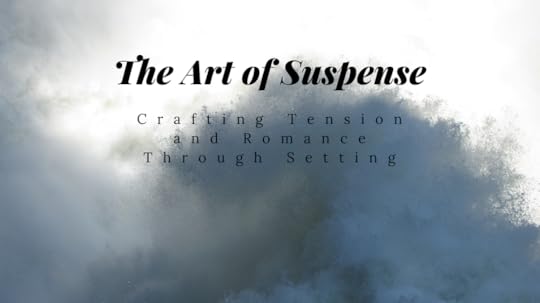
When it comes to crafting suspense in romantic suspense, one of the most powerful tools is the setting. While many think of dark, stormy nights or haunted mansions as the quintessential backdrops for tension, I've found that the most terrifying settings are often the ones we know well. A familiar environment can become unsettling with just a few subtle changes—a detail out of place or a slight shift in atmosphere. These small alterations can heighten the psychological tension, making readers feel the same creeping dread as the characters. I experienced this firsthand during my middle school years when a seemingly ordinary night at home turned into a heart-pounding experience as Edgar Allan Poe’s words, a flickering light, and a sudden storm transformed my safe space into something sinister. This concept of familiar spaces becoming alien and frightening is something I love to explore in my writing, especially in Into the Fire and The Fire Inside, where my characters’ homes become settings of danger and fear.
Often, I've found that somewhere so familiar like your own home can become frightening with slight changes. When I was in middle school, I found myself alone for the night in my home. Foolishly I turned on the classical music station and pulled out my collection of Edgar A. Poe poetry and began reading my favorite. As the wind caused a branch to bounce against the kitchen window, clashing with the notes of an Baroque piece. When the lights flickered before the crack of thunder caused me to jump when the narrator peered into the deep darkness, wondering, fearing, doubting, dreaming dreams no mortals ever dared to dream before. But the uncanny mix of environmental aspects and internal imagination turned the night into something sinister.
Needless to say I was scared out of my mind, even though my house was familiar, I normally had no issue being alone, and I had read this poem multiple times.
For instance, in Into the Fire Travis' home becomes terrifying as a stalker invades his personal space. This contrast of safety with danger, creates psychological tension.
In The Fire Inside, Anna's apartment is introduced to the readers on a humid summer night, slight clues point to the fact that Anna isn't alone. The gradually introduction of unsettling elements--a lightly ajar door, an out-of-place object, or an eerie silence-- that forces the reader to question what is normal.
I feel it's more important to build suspense through the internal feelings and observations of the character(s). Since I write in first person, the characters' internal monologues and reactions become key to building suspense. How they process the world around them, like the intrusive thoughts of danger, adds layers to the atmosphere. Use short, fragmented thoughts or interrupted internal dialogue to reflect the characters' racing mind and increase the pace as suspense builds.
You can include the external environment like weather or location through the character(s) five senses.
Five senses; emphasize how using all five senses can enhance a scene. For example, in Into the Fire, Travis not only sees a knife but smells the paint. The combination of these senses makes the moment more immersive and heightens tension. This technique can create a deeper connection between readers and the environment, allowing them to experience the character's fear firsthand.
-Chapter 14 Into the Fire
...
...
-Chapter 1 The Fire Inside
I love to use the slow pacing of vague observation and then the speed as the suspense ramps up as you can see in the examples above. In the examples above Anna observes vague clues that create a sense of unease, then we shift into high gear as the suspense escalates. Your approach to pacing can be a powerful tool, as seen when the characters' environments and emotional states unravel slowly, before culminating in an intense climax. Vare sentence length--use longer, descriptive sentences to slow the action, and short clipped sentences to speed up the tension.
Stephen King's 'On Writing': A classic source on building tension and atmosphere, Stephen King's advice on pacing and detail can help provide context for how to slowly build fear through familiarity and subtle hints.
The Elements of Suspense in Fiction (Writer’s Digest or similar resource): Highlight common writing techniques, such as foreshadowing and creating red herrings, and discuss how you incorporate these into your work.
The Art of Character by David Corbett: Since you emphasize building atmosphere through characters’ internal thoughts, referencing material on deep character exploration could bolster your insights into how you craft internal suspense.
Suspense isn’t just about external threats—it’s about how those threats invade the character's inner world. Whether it's the familiar turned foreign or the steady build of vague unease that leads to explosive action, a suspenseful setting serves as the foundation for driving tension. By drawing on all five senses, weaving in symbolic details, and giving readers access to the character’s internal fears and observations, I aim to make the atmosphere in my stories as much of a character as the people themselves. As seen in Into the Fire and The Fire Inside, suspense thrives in the contrast between safety and danger, and familiar settings transformed by subtle threats. Whether you’re a reader or a writer, I hope these insights help you appreciate how a well-crafted atmosphere can elevate the tension and keep you on the edge of your seat. After all, sometimes the scariest place isn’t some far-off haunted mansion—it’s right in the comfort of your own home.
 Editing, formatting
Editing, formatting 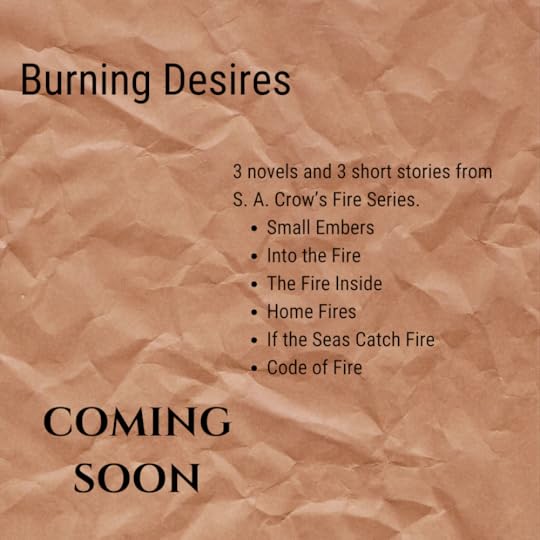 revising
revising
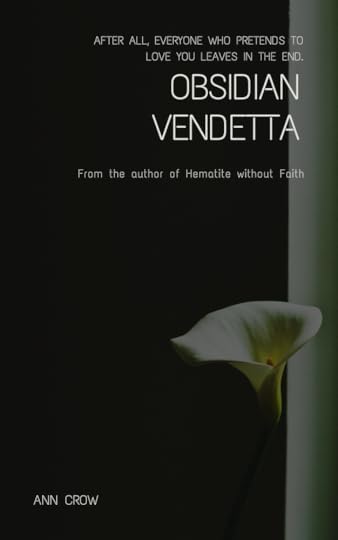 Drafting
Drafting
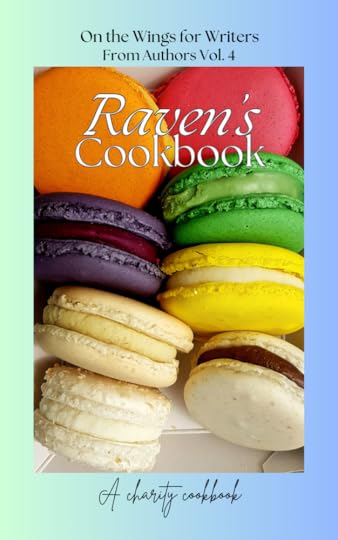




A Little Thing Called First Love
Bad Guy My Boss
Eccentric Romance
Every You, Every Me
Fourever You
Jack & Joker: U Steal My Heart!
Kidnap
King the Land
Let Free the Curse of Taekwondo
Love in the Big City
My Damn Business
Uncle Unknown
October 16, 2024
Mastering the Art of Romance and Suspense Over Multiple Books
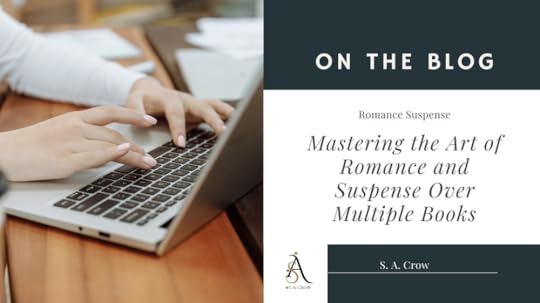
When crafting a romance-suspense series, the challenge lies not only in creating captivating love stories and thrilling plotlines but also in sustaining that magic across multiple books. Readers crave consistency yet want something fresh and exciting with each new installment. As an author who thrives on series writing, I’ve come to embrace these challenges. In this post, I’ll share my journey and insights on how to keep romance and suspense alive from book to book, drawing from my own experiences with the Fire Series and P.I.R. novels. Whether you’re a writer or a fan of series fiction, I hope these strategies inspire you to explore new ways to keep readers hooked for the long haul.
This is a funny question and has been a topic of jokes in my home. I enjoy reading a series where you follow a group of people who work together and share their lives. Nothing makes me happier than to read a book further in a series and get to see how the other couples are doing. I have a story I started working on in 2023 that I swore is a standalone novel, slowly it appears it might tie into a spinoff of the fire series. The joke in the house is that I can't seem to write a standalone novel.
Often the suspense encountered in the novel will be resolved in the book's timeline. Yet, in two of my novels, the suspense that readers encounter is connected and will have some overarching plot issues for the group. In, The Fire Inside we are introduced to a White Slavery Trafficking Ring and at the end of the novel the guys give the information they compiled to Steve because he is a freelance journalist and there is some Seattle connections. Therefor in the novel If the Seas Catch Fire the suspense encountered has ties to the research and information that Steve finds and reports on. The main thing to do is keep track of the suspense plot and characters connected and leave seeds of information in your writers notebook.
In my urban fantasy noir mysteries, I'm fortunate that Avril's love interest changes in each book, but she does have some exes that I need to remember. Also, each book has its own case she is trying to solve, but there are suspense plots that will cross the book series. Always keep your notes together in a easy to find and read notebook.
These books are all about romantic tension and solutions. The main thing I focus on is communication and how it can solve tension and issues that arise in any relationship. Since my books in the series focus on one couple at a time. I do keep track of what is happening in every characters life in the series timeline. I put all this information in my writers notebook.
When I know that I'm writing a book series the first thing I ask myself is what is the outcome I want for the series.
For the Fire series, the overarching theme is friendship can be closer than family. Therefore, it's important that I follow that theme with each book, it's couple, and the suspense encountered. I know what will happen in the last book to pay off the theme I've chosen.
For the urban fantasy P.I.R. novels, I decided the number of novels 13. I also know who Avril will end up with as her romantic partner for the rest of their lives. She made a promise to Rafe and the universe and that has to be paid off through the series, which affects her character development throughout the series.
Oh there are a few that I've enjoyed over the years because this is one of my go to genres. Here a few of my favorites.
City Shifters by Layla Nash
Guild Hunter series by Nalini Singh
Sookie Stackhouse series by Charlaine Harris
Beyond series by Kit Rocha
Kushiel's Legacy by Jacqueline Carey
Love Undercover series by Lori Foster, Men Who Walk the Edge of Honor, SBC Fighters series as well
Scandals of the Bad Boy Billionaires series by Ivy Layne and more series by her
Brooklyn Dawn series by Cari Quinn and more of her series
Four Horsemen MC by Sara Rayne, Cynthia Rayne
My best advice is to experiment with each book by trying something new, such as using a unique opening, applying a writing tip you learned, or incorporating something you enjoyed from a book or show you watched. The Fire Inside has a cold open similar to a Criminal Minds type of opening. I research and try to use a different writing or plotting device than I have before.
Writing a romance-suspense series is a rewarding journey that requires a balance of planning, creativity, and a deep connection to your characters and themes. By focusing on overarching plotlines, sustaining romantic tension, and embracing new techniques, you can create a series that captivates readers from the first book to the last. Remember, it's the blend of familiarity and surprise that keeps fans coming back for more. So, whether you're just starting out or well into your series, keep experimenting and refining your craft. Who knows? Your next book could be the one that hooks readers for life.

Small Embers for the boxset Burning Desires
Obsidian Vendetta book 1 of the P.I.R. series




Bad Guy My Boss
First Note of Love
Jack & Jocker: U Steal My Heart
Kidnap
The Untamed
Four Ever You
Smells Like Green Spirit
Uncle Unknown
Wonderland of Love
Every You, Every Me
Record of Youth
My Damn Business
Eccentric Romance
October 9, 2024
The Art of Love and Fear: Unpacking the Appeal of Romantic Suspense

In romantic suspense, the intertwining of love and fear creates a compelling narrative that draws readers into a world where passion and peril co-exist. The popularity of this genre reflects readers' desire for stories that don’t just offer romance but also bring an element of danger and suspense. Romantic suspense novels often top the charts, consistently ranking among the most popular romance subgenres. This is due in part to the genre’s unique appeal: the ability to thrill and enthrall by building tension and emotional stakes as characters navigate both their romantic and physical survival (The Book Inspectors)(FictionFaves)(Darla G. Denton | Author Platform Coach).
Balancing love and fear is key to creating a gripping romantic suspense narrative. I constantly ask myself, “What could go wrong now?” to ensure the suspense elements don’t let up while allowing the romance to develop organically. This interplay of tension and emotional growth is why I believe readers are so drawn to romantic suspense. A well-crafted love story is always enjoyable, but there’s something especially enticing about a romance that unfolds amid danger, where the stakes are as high emotionally as they are physically.
What elements of love and fear do I find most compelling to explore in romantic suspense?Elements of Love:The elements of love that I find so compelling are;
Trust and Vulnerability: watching a character trust enough to be vulnerable is something that gets me every time.
Protectiveness: this is the most important one for me and it doesn't always come from the male lead, both characters can show their protectiveness towards their partner, friends, and loved ones.
Sacrifice: The upcoming short story Small Embers that will be included in Burning Desires the Fire series boxset is the first time I've played with sacrifice the most.
Unconditional Support: In the Fire series this is a major element between the friend group and I often show it among the couples in each novel.
Resilience and Growth: This is one of the top elements for me. I want to watch a character grow, and resilience in relationships.
Elements of Fear:Danger and Threats: One of the top fears I use most often in my books.
Betrayal and Deception: Betrayal I used in If the Seas Catch Fire, deception played a large role in all of the Fire series.
Uncertainty and the Unknown: not knowing who is threatening you or where and when the danger will come for you is a great element of romantic suspense.
Psychological Trauma: I've loved psychological horror, thrillers, and stories in general. Is it any wonder that I was working on my Bachler's in Psychology when in college.
How do you balance the tension between love and fear in my writing to keep readers engaged?Finding a balance between the necessary growth of the love between the characters and the suspense plot is something that you have to develop a feel for. In the previous blog post I talked about weaving the two different plot points together. Anytime the pacing seems to be slowing down I have a question I ask myself every time, "What could go wrong now?"
Why do I think readers are drawn to the combination of romance and suspense?Don't get me wrong, a well written love story is a lovely thing to read. But often we love to read something that gives a little action or sense of danger to a love story.
Romantic suspense is a thriving subgenre within romance, ranking high in popularity due to its unique blend of romance and tension-filled narratives. While contemporary romance remains the most popular overall, romantic suspense consistently attracts readers, often appearing within the top five romance subgenres on platforms like Amazon (The Book Inspectors)(Darla G. Denton | Author Platform Coach).
The appeal of romantic suspense lies in its fusion of love stories with high-stakes, often dangerous situations. Readers are drawn to the genre for its adrenaline-pumping plots, where protagonists navigate both romance and threats. The element of suspense adds depth and complexity, keeping readers engaged with plot twists and heightened emotions as relationships develop against a backdrop of danger. Additionally, this genre benefits from a versatile setting, often featuring law enforcement or military characters, which enhances the sense of realism and excitement (FictionFaves).
Interestingly, the genre’s popularity has been attributed to its ability to combine elements from other successful subgenres, such as paranormal romance or thrillers, while retaining a focus on romantic connections. Romantic suspense’s versatility and capacity to blend with other genres may be key to its enduring appeal, as readers seek out stories that provide both emotional and narrative intensity.

I'm currently working on:
Revising, editing, and formatting the last story for the Fire series boxset Burning Desires coming to you winter 2024.
I'm also editing the urban fantasy noir mystery novel Obsidian Vendetta for my Ann Crow pen name.
Also, we are working on the 4th charity cookbook for On the Wings for Writers coming this winter.




Bad Guy My Boss
First Note of Love
Jack & Joker: U Steal My Heart
Kidnap
The Untamed
FourEver You
Smells Like Green Spirit
Uncle Unknown
Wonderland of Love
Every You, Every Me
Record of Youth
My Damn Business
October 2, 2024
From Meet-Cute to Mystery: How to Weave Romance into a Suspense Plot

As a writer, you may have some across advice like 'write to genre' that can feel a bit vague at first. It's really about shaping your story to meet the expectations of your chosen genre audience while allowing room for your unique voice. This refers to tailoring a story to fit within the specific conventions, themes, and expectations of a particular genre. You focus on elements that define that genre, like:
Plot structure: For instance, a mystery novel typically involves a crime and the process of solving it, while a romance novel focuses on the development of a relationship.
Character archetypes: like detectives or P.I.'s in mystery, heroes in fantasy, or lovers in romance.
Tone and style: The mood of the writing often aligns with the genre, such as suspenseful and tense in thrillers, light and emotional in romance, or dark and gritty in noir.
Audience expectations: You understand the audience expectations for the genre but deliver the elements with your own voice and originality.
How do I balance the development of a romantic relationship with the unfolding suspense in a suspense or mystery plot?After I know my characters and what the suspense or mystery plot is for the novel in question, I begin the outlining process. First, I start with the beats of a romance story from Kaye Dacus, Writing the Romance Novel: The Seven Story Beats. Then I'll take the story beats for a suspense novel like from Squibler How to Write a Thriller Novel in 7 Steps.
When I outlined The Fire Inside, I used a table

This table made it easy to weave both plots together.
What makes a meet-cute moment work within the context of a suspense-driven narrative?A suspense or mystery subplot gives more options to the meet-cute part of the Romance plot. It can also help give you a chance to set the tone of the book. In a suspense plot, a meet-cute can have higher stakes. It’s not just about meeting over a spilled coffee—it’s about being thrown together in circumstances where trust, danger, or secrets are involved. In Into the Fire, the shared love of food was a lighthearted introduction, but in The Fire Inside, the danger of being saved from an ex-boyfriend immediately added emotional weight to the connection.
The most common challenge of integrating suspense or mystery sub-plot into a Romance novel for me?The biggest challenge for me is ensuring all the plot threads are resolved. At the end of the second act, I pause to review both the romantic and suspense arcs, checking for unresolved subplots or conflicts. This ensures that the resolution in the final act is both emotionally satisfying and logically sound.
Building Tension in a Romance Suspense Novel:How I maintain tension in a romance suspense novel without one overshadowing the other?To maintain tension, I make sure the romance and suspense plots inform each other. For instance, a suspenseful situation might lead the couple to reveal their vulnerabilities, deepening their emotional bond. Conversely, romantic conflicts might add personal stakes to the suspense.
Plot Structure:What strategies do I weave suspense beats into the pacing of a romance plot without slowing down the romance or suspense plot?With the help of the table, I can easily determine where the plot points should occur and how they should fit together. I might use a suspense plot point to increase the trust between the couple, or push the couple apart when needed. In a mystery, the story revolves around solving clues, whereas in a romance, it's about the characters' emotional bond. When combining the two, you need to interweave these elements, knowing which elements to cut and others to bring forward, and interweave these elements so that neither overwhelms the other.
Ann Crow and Urban Fantasy Noir Mystery:How does my approach differ when writing urban fantasy noir mystery as Ann Crow compared to my work as S. A. Crow writing the Fire series?There are many differences between writing urban fantasy noir mystery vs. romance suspense. First are the genre expectations, noir mystery has certain rules where romance suspense I have more area to play in. Second is the difference is that in my urban fantasy series, P.I.R. is written in one Point of View (POV) Avril is our detective and all our observations are through her eyes and life experience. My Fire series is written in split POV between both lovers. The next approach is the difference between the fantasy genre and the contemporary world of my romance novels. In the P.I.R. series, I have some fun ways to commit crimes.
What can you expect from the blending of romance and suspense in my upcoming works, particularly in both the Fire Series and the P.I.R. series as Ann Crow?
Currently, I'm editing the first novel in the series Obsidian Vendetta with a hopeful Summer 2025 release in time for Pride Month.

Urban Fantasy Mystery novel. Avril Florez a half-fairy detective for Fort Worth Texas PIR (Paranormal Investigation and Registration) department must find a killer and prove the Master Vampire’s innocence before she is ordered to kill the Master Vampire for going rogue. All while her personal life falls apart and adding to that she is unsure if the Master Vampire wants a relationship with her for her or to save his hide. Thank goodness she doesn't believe in relationships in the first place. After all, every one who pretends to love you leaves in the end.
But if you would like to read something from the series now you can do that. Hematite without Faith a short story that fits between Obsidian Vendetta and book 2 Moonlight.
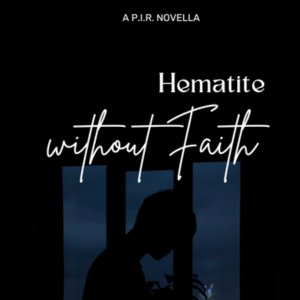 The Fire Series
The Fire Series
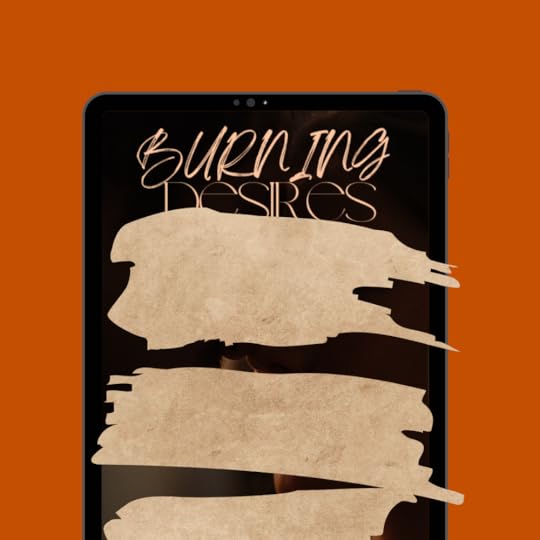
I'm working diligently to bring you the first box-set Burning Desires this coming Winter 2024-2025. Yet the next story in the series I'll be revising to bring to you next year.
The Night Will Flame with Fire
Things are looking up for Malcolm Aaron, ex-Navy SEAL, turned bodyguard. He's now in Seattle, Washington, part owner of Bastian Securities, with his friends. When he's forced home to Victorville, California and a past, he'd rather forget.
Julie has spent the last few years taking care of her older sister, who was in a coma from a random act of violence. When her sister passes away recently, Julie gains temporary custody of her nephew until the will is read. She learns that the will can't be read without her sister's ex-boyfriend appearing back home. She is willing to sacrifice more of her dreams and peace to keep her nephew in his childhood home.
After a letter gives both Malcolm and Julie some shocking truths. They agree to work together to solve the mystery her sister left behind.
Can they work together to get what they want most?
Or will more truths change everything for both of them.


The Witch's Crystal Devon Gambrell


Bad Guy My Boss
First Note of Love
Happy of the End
I Saw You in My Dream
Jack & Joker: U Steal My Heart!
Kidnap
Love Next Door
Monster Next Door
The Untamed



